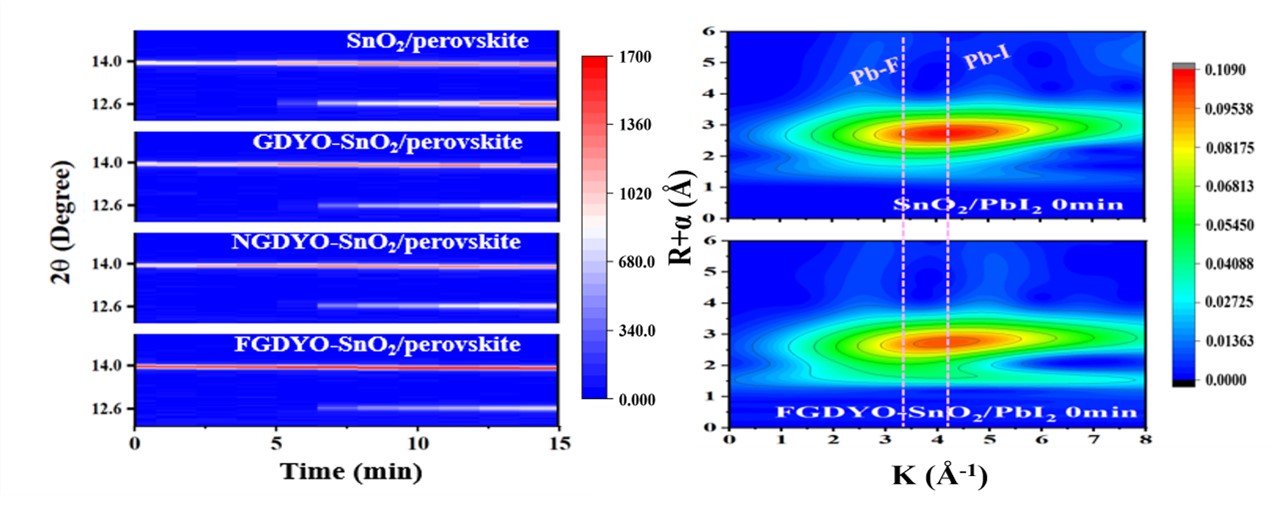Highlights/News
Scientists Reveal Mechanism of SnO2 Electron Transport Layer Modified by Graphdiyne in Perovskite Solar Cells
2023-06-13
Prof. SUN Baoyun's group from the Institute of High Energy Physics of the Chinese Academy of Sciences recently used graphdiyne oxide (GDYO), fluorinated GDYO (FGDYO) and nitrogen-doped GDYO (NGDYO) to improve the SnO2 electron transport layer in perovskite solar cells and revealed the relevant mechanism using synchrotron radiation technology. This study, entitled “SnO2electron transport layer modified by F/N-doped graphdiyne and in situ XRD and in situ XAFS exploration on its effect on perovskite active layer,” was published in Nano Today.
The researchers tracked the growth process of SnO2, PbI2 and perovskite using in situ XRD and the chemical bonds on the interface between ETL and the active layer using in situ XAFS. They found that the stronger interaction between the doped SnO2 and PbI2 inhibited PbI2 crystallization in perovskite layers and gave more opportunity for the PbI2 precursor to form perovskite, thus making perovskite crystallize better. In addition, they found different GDY-based materials to have different effects: NGDYO gave ETL the best conductivity and the most matched energy level, but the best perovskite crystallinity was induced by FGDYO–SnO2. Three GDY-based materials also had the same effects: SnO2 layers with GDY-based materials optimized the properties of the SnO2 layer itself and the interface between SnO2 and the perovskite layer, and then affected the growth of perovskite.
In situ XAFS, which captured key interface bonding information for the first time, laid the foundation for interface research using synchrotron radiation technology. At the same time, systematic research on the mechanism of additives is beneficial for providing the scientific basis for new ideas on improving the performance of perovskite devices.
This work is supported by the Beijing Synchotron Radiation Facility on the 1W1B beam line, 1W1A beam line, 4B9A beam line and 4B7A beam line. The project is supported financially by the National Key Research and Development Program of China (2018YFA0703504) and the National Natural Science Foundation of China (21971242).

Fig. 1 In situ XRD of perovskite on SnO2 layer with or without GDY-based materials and in situ XAFS spectra of PbI2 on SnO2 and PbI2 on the FGDYO–SnO2 layer. (Image by IHEP)
Contact Information
Mr. GUO Lijun
ljguo@ihep.ac.cn

